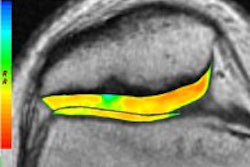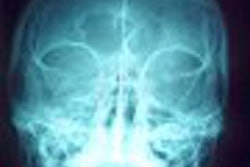One of the most common presentations for children in the emergency room is suspected appendicitis, and this presentation is more likely to be encountered by clinical staff during the after-hours period, such as a weeknight or weekend shift.
The conventional assumption is that the use of ultrasound or CT in the assessment of pediatric patients during these shifts is more costly than if these exams were conducted during the weekday shift. However, a recent study showed that diagnostic imaging contributed little to the overall cost of the assessment of appendicitis, regardless of the shift in which it was conducted.
"Under conditions where both parents work and leave their children in school or day-care centers, abdominal symptoms suggestive of appendicitis are first realized when the parents return from work or when day care mangers communicate the children's suspicious symptoms to the parents at the end of the day," wrote the authors in Pediatric Radiology (December 2005, Vol. 35:12, pp. 1186-1195).
The Canadian researchers conducted a retrospective cost-effectiveness analysis that compared the costs and outcomes associated with clinically suspected appendicitis where diagnostic imaging exams were performed. They broke out their analysis on the basis of a standard shift, weekdays between 8 a.m. and 5 p.m., and after-hours shifts, weekdays between 5 p.m. and 8 a.m., and weekends.
"During this work shift (after hours), ultrasound examinations were performed, preliminarily read, and communicated to the emergency staff and general surgery fellow by the diagnostic imaging fellow on-call," the authors wrote. "The CT examinations were performed by a technologist and checked and preliminarily interpreted by the diagnostic imaging fellow on-call."
The study team defined a cohort of 76 consecutive patients, ranging in age from neonatal to 17 years old, who were admitted for suspected appendicitis through the emergency room at the Hospital for Sick Children in Toronto. The patients underwent laparotomy and diagnostic imaging. Of this group, 41 children from 1.8 years to 17 years were evaluated in the after-hours period, and 35 children between 2.9-16 years were evaluated during the standard workday.
One of the assumptions the authors investigated was that less-experienced imagers working in the after-hours shifts might contribute to decreased effectiveness of medical care on weekends and weeknights. However, their analysis of the results did not bear this out.
"The difference in healthcare experience of the two work shifts as related to scanning (ultrasound) and interpreting (ultrasound and CT) of the imaging did not have a significant effect on the rate of true positives and false positives in the study," they wrote.
In regard to the costs of appendicitis, the team found that costs incurred on the ward were the highest single element for both shifts in the overall budget analysis. For patients with non-perforated appendicitis, 37% of the total costs for the day shift and 47% of these costs for the after-hours shift were attributed to the ward. If the patient had a perforated appendix, 55% of the day-shift costs were credited to the ward and 67% of the after-hours shift costs were ascribed to the ward.
Diagnostic imaging, the team found, had little impact on the cost of providing care within the overall expenditure for assessment of appendicitis in pediatric patients.
"Within the overall expenditure, average cost per patient in the diagnostic imaging department (including ultrasound, CT, radiographs, and interventional procedures) ranged from 2% to 5% of the total costs for patients with no-perforated appendicitis in the standard-hours period ($160 [U.S.] out of $4,520, 3%) and after-hours period ($174 out of $3,714, 5%) respectively, and for patients with perforated appendicitis in those groups (standard-hours period and after-hours period: $188 out of $7,688, 2% and $327 out of $6,472, 5% respectively)," the authors wrote.
The authors noted that a higher proportion of severe cases were seen in the after-hours shift, primarily due to a delay in obtaining care from the onset of symptoms, which biased the results. In addition, they observed an interesting element of workflow between the two shifts: pediatric patients presenting in the after-hours period were more likely to receive diagnostic imaging exams sooner than those who presented during normal workday hours.
"Paradoxically, the time interval between emergency department registration and diagnostic imaging examination was significantly longer in the standard-hours period compared with the after-hours period in our study because of competing diagnostic imaging schedules for outpatients and patients from the emergency department," they wrote.
By Jonathan S. Batchelor
AuntMinnie.com staff writer
February 22, 2006
Related Reading
CT signs predict perforated appendicitis, April 29, 2005
Presurgical imaging for appendicitis needed for young women, but not men, November 29, 2004
CT can be used to rule out appendicitis, October 11, 2004
Standard-dose no better than low-dose CT for diagnosing appendicitis, July 28, 2004
Part IV: Imaging the pediatric patient: CT applications in pediatric imaging, May 12, 2004
Copyright © 2006 AuntMinnie.com



















